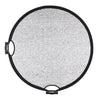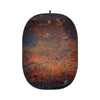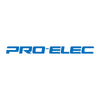Macro Photography - Tips and Equipment for a Successful Shoot
Macro photography is a fascinating branch of the photography field because it allows you to visualise entities that are otherwise too small fully appreciate with the naked eye. There is an art to making tiny things look magnificent, by capturing their beauty and features up-close. However, like every skill, taking a beautiful macro photo requires time and practice, as well as some prior knowledge.
With this guide, we have compiled some critical tips and essential tools that can set you on the right path in your macro photography journey.
Let’s take a look at the tips and tricks first.
1. Skip the windy days
Taking a sharp macro photo on a windy day is close to impossible. Even a slight breeze can disturb move your subject out of the plane of focus. So, windy days are off the list unless you are going for a motion blur. Try to wait and pick a relatively calm day – it will save you multiple wasted hours.
2. The early bird catches the worm (rather literally in this case)
There is a reason why this saying is famous. Early morning time is often cited as the best portion of the day for macro photography. If you are literally trying to capture a worm or other insects like dragonflies – the early hours are great as dew is still present on their wings, making it hard for them to fly. These hours are also crucial because of light which is shadow-free before the sun is fully up.
3. Be careful about your backgrounds
It may seem like the background is unimportant when capturing a macro photograph because you only have to focus on the subject. However, a good background is equally essential in macro photography for the overall aesthetic and accentuating your subject. Choose your backgrounds carefully, so they highlight your subject and direct light in an aesthetic way.
4. Aperture setting – most is not always the best
Macro lenses are designed to focus minuscule details and generally have a wide maximum aperture (such as F/2.8). However, just because your lens opens up to f/2.8, we wouldn’t recommend shooting macro at that aperture. Since you will be focusing really close to your subject, your depth of field at that aperture would be extremely narrow. It is better to use smaller apertures such as f/16 or f/22 o get more of your subject in sharp focus.
5. Pay attention to the light
Light is to photography what water is to life. And when it comes to macro photography, you simply need plenty. It can be sunlight or an off-camera flash – but ample lighting is essential for taking sharp and focused macro photos. Plenty of lighting also enables you to shoot faster shutter speeds and higher apertures. Find more on your artificial lighting options in the essentials list.
6. Know your subject well
This is a critical aspect of macro photography most people overlook when starting their journey. Since many macro photographers start off by capturing insects and small animals, it is important to know your subject thoroughly where and when you are most likely to find these living creatures. For example, if you want to capture butterflies – you should seek them later in the day when they sit on flowers to rest through the night.
7. Cropping can be your best friend
Contrary to common belief, most macro photographers do not go too close to their subject when trying to capture a sharp shot. There are chances that you will scare the subject away or put yourself in danger. Standing a pace away also enables you to focus on the whole subject. Most macro photos you see online have been tightly cropped, and you should learn to do the same!
Now that we have covered some of the essential tips and tricks, let’s talk about the essentials you will need to begin your macro photography journey.
· Macro lens
True Macro Lenses are designed to capture sharp close-up photographs, a dedicated macro lens is the best essential you can buy for macro photography. They are available in wide or normal angles and different telephoto focal lengths. They are available for almost every camera system and can usually get as close as life-size (1:1).
Most macro photographers prefer macro lenses with a longer focal length (such as 100mm or 150mm) because they are less likely to cast shadows on the subject and, if you are shooting insects, they will not be scared away. Macro lenses can usually focus to infinity and are equally viable for non-macro photography.
Pro Tip: The easiest and most economical way to begin macro photography is by reversing your camera lens using reversal rings. When mounted backwards, your lens becomes a magnifying lens.
· Extension tubes
If you don’t have a dedicated macro lens, using extension tubes are a great economical solution for macro photography. Extension tubes are hollow spacers, that are mounted between your lens and your camera. Extension tubes decrease the minimum focusing distance of your lens without affecting image quality. This enables you to focus closer to your subject for better magnification. The downside to extension tubes is that you will lose infinity focus. Be careful not to add too much extension, as you may put the minimum focusing distance behind the front element of your lens, making focusing impossible.
Whilst most basic extension tube models require manual focusing, premium ones can come with full metering and autofocus functionality.
· Macro lighting systems
As we mentioned earlier, lighting is a critical element of macro photography, so various lighting systems are dedicated to the purpose. They are available in the form of flashlights such as RIKO400 (400Ws) and MF12 (12Ws), or RING72 Daylight.
 |
 |
 |
RIKO400 (400Ws), MF12 (12Ws) and RING72 Daylight
For shadowless macro photos, ring lights are a wiser choice, but if you want to model the lighting, go for a combination of ring and twin lights. Flash is preferred for fast-moving small objects such as flying insects. Ring flash is preferable on most occasions but macro photos can still be able to achieve by any strobe-like PIKA200PRO or CITI300PRO (Pocket flash is commonly used for their size and portability).
 |
 |
PIKA200PRO and CITI300PRO
· Macro Photography Accessories
Getting a bundle that all the small yet critical macro accessories and modifiers is a smart idea. We recommend PiXAPRO’s kit that includes an optical snoot, a black and white PVC background, one collapsible reflector, and one tabletop background stand. Having a kit ensures you do not buy items individually and have everything in one place.

Macro Photography Modifiers & Accessories Bundle

Final Words
Capturing sharp macro photographs is an exciting idea, and it enables you to see the world more closely, bringing the minuscule details to highlight that is often overlooked. While accessories and tips are important to step into the sensational world of macro photography, they all exist to assist something greater – the photographer’s eyes.
Therefore, always remember that if you have the passion for capturing these beautiful shots – all you need is a little perseverance to get started. We hope this short beginner’s guide on macro photography helps you along the way.










































































































































































































































































.png?v=1684397964210)





